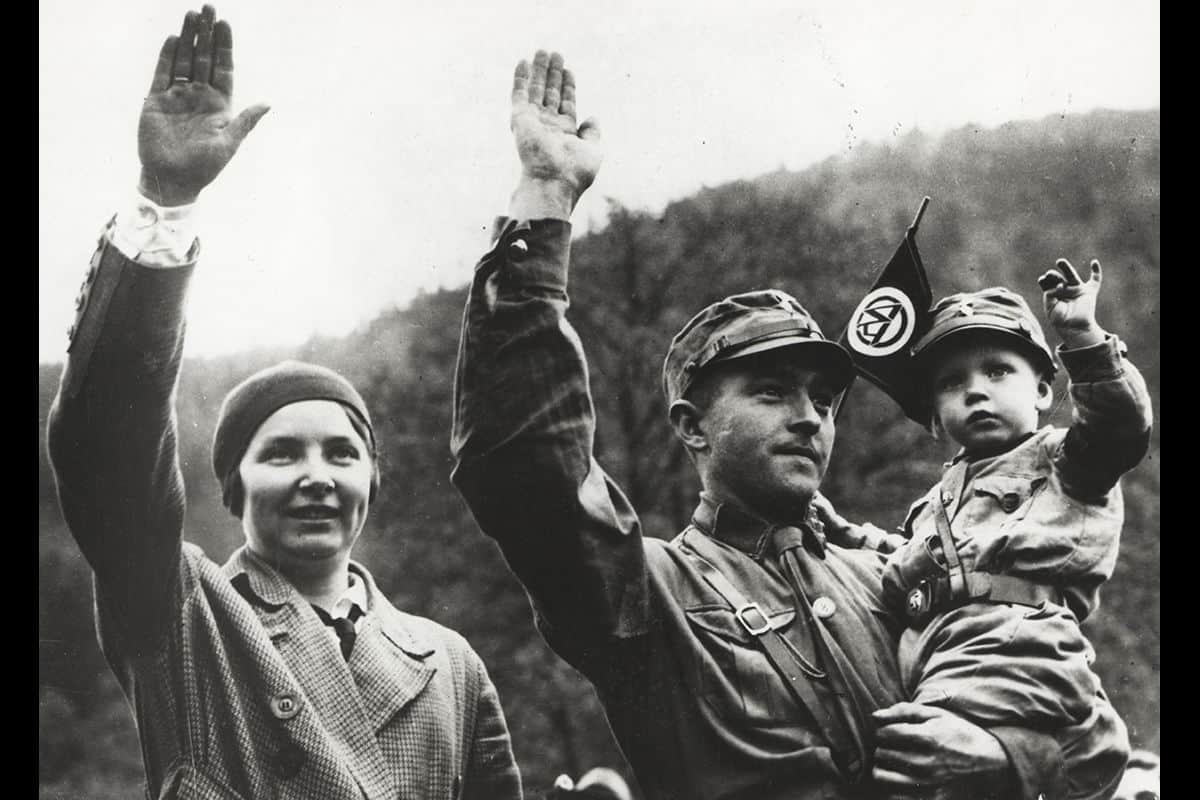The Third Reich Based
The Third Reich, under the leadership of Adolf Hitler, was one of the most oppressive and authoritarian regimes in modern history. Its rise to power was characterized by a combination of tactics and strategies that consolidated authority and control. This article explores the Third Reich’s utilization of fear, censorship, laws, and incentives as tools for establishing and maintaining its power. Each of these elements played a significant role in shaping the narrative and structure of Nazi Germany.
I. The Third Reich’s Foundation of Fear
Underpinning the Third Reich’s authority was the pervasive use of fear. The regime systematically employed tactics to instill fear in its citizens and suppress dissent.
1. Propaganda and Indoctrination
The Nazis utilized a sophisticated propaganda machine to manipulate public perception and promote their ideology. Through posters, radio broadcasts, films, and speeches, they perpetuated the myth of Aryan supremacy and demonized various minority groups, particularly Jews.
2. The Gestapo and SS
The Gestapo, or Geheime Staatspolizei, was the Nazi secret police, tasked with identifying and eliminating opposition to the regime. The SS, or Schutzstaffel, played a similar role, operating as an elite paramilitary organization responsible for enforcing loyalty to the Nazi Party and its leadership.
3. The Night of the Long Knives
In 1934, Hitler ordered the Night of the Long Knives, a brutal purge of political opponents and potential rivals within the Nazi Party. This violent episode sent a clear message that dissent and disloyalty would not be tolerated.
4. Concentration Camps
The Third Reich’s network of concentration camps, such as Auschwitz and Dachau, were instruments of terror and death. They served as both a means to imprison political opponents and minority groups and as a symbol of the regime’s willingness to use extreme violence to achieve its goals.
II. Censorship and Control of Information
Censorship was a cornerstone of the Third Reich’s strategy to manipulate and control the flow of information. The Nazi regime tightly regulated the media and suppressed dissenting voices.
1. Book Burnings
In May 1933, the Nazis organized a series of book burnings, during which they destroyed works deemed “un-German” or contrary to Nazi ideology. This event signaled the suppression of free expression and the imposition of the party’s narrative.
2. Control of the Media
The Nazis took control of newspapers, radio stations, and other media outlets, ensuring that information was disseminated through a Nazi lens. Independent journalism was silenced, and dissenting voices were marginalized.
3. Banning of Opposition Parties
Through the Reichstag Fire Decree and the Enabling Act, the Nazi regime eliminated opposition political parties, effectively cementing a one-party state. This allowed the Nazis to further control and censor public discourse.
4. Persecution of Intellectuals
Intellectuals, writers, artists, and academics who were critical of the Nazi regime were persecuted and often silenced. Prominent figures, such as Albert Einstein and Thomas Mann, fled the country to escape persecution.
III. Laws and Legislation as Instruments of Control
The Third Reich utilized a legal framework that not only legitimized its actions but also reinforced the regime’s authoritarian control.
1. Nuremberg Laws
The Nuremberg Laws, enacted in 1935, legalized racial discrimination in Nazi Germany. These laws defined who was considered Jewish and established the legal basis for the systematic exclusion and persecution of Jewish citizens.
2. Reich Citizenship Law
The Reich Citizenship Law, also part of the Nuremberg Laws, stripped Jewish individuals of their German citizenship and relegated them to the status of “subjects.”
3. Anti-Semitic Legislation
Numerous laws targeting Jews were enacted, including bans on intermarriage, restrictions on employment and education, and the confiscation of property. These measures systematically marginalized and isolated the Jewish population.
4. Euthanasia Programs
The Nazis implemented euthanasia programs aimed at eliminating individuals with disabilities. These programs were conducted under the guise of legal medical procedures.
IV. Incentives and Rewards for Loyalty
While fear and repression were integral to the Third Reich, the regime also employed incentives to motivate and reward loyalty to the Nazi Party.
1. Economic Advancement
The Nazi regime offered economic incentives to those who supported the party. Business owners who aligned with Nazi policies saw preferential treatment, while those who resisted often faced repercussions.
2. Nazi Youth Organizations
The Hitler Youth and the League of German Girls were organizations that aimed to indoctrinate and mobilize young people into the Nazi ideology. Participation was incentivized through various activities, trips, and social rewards.
3. Military Service
Joining the military was an avenue to advancement and recognition in Nazi Germany. The military not only provided opportunities for individuals but also reinforced the idea of loyalty to the state.
4. Party Membership
Becoming a member of the Nazi Party, though often driven by coercion and peer pressure, came with certain privileges and access to resources. Party members were rewarded with jobs, housing, and other benefits.
Conclusion
The Third Reich’s power was consolidated through a combination of fear, censorship, laws, and incentives. The regime’s use of fear and repression cast a long shadow over the era, as individuals were silenced and intimidated. Censorship and control of information ensured that the Nazi narrative prevailed, and dissenting voices were suppressed. The implementation of discriminatory laws furthered the regime’s agenda by legally marginalizing and persecuting targeted groups. Simultaneously, the Nazis employed incentives and rewards to encourage loyalty and compliance, even as they systematically violated human rights and undermined democracy.
The Third Reich serves as a haunting example of the destructive power of authoritarianism when leveraged through fear, censorship, laws, and incentives. It remains a stark reminder of the importance of safeguarding individual rights, free expression, and democracy in the face of oppressive regimes.
Wikipedia Link: For more in-depth information on the Third Reich and its history, you can visit the Wikipedia page dedicated to Nazi Germany.

